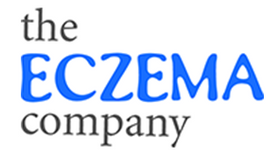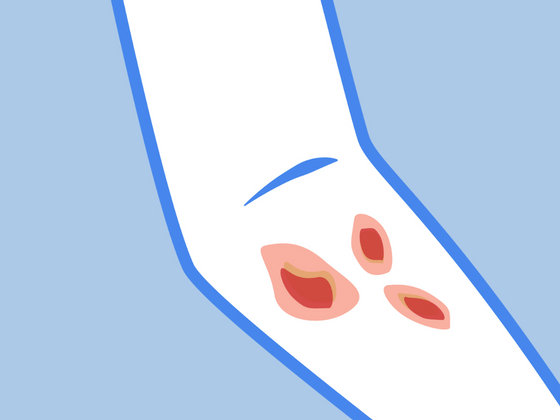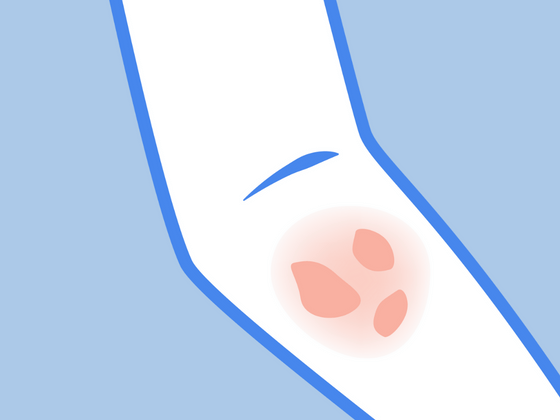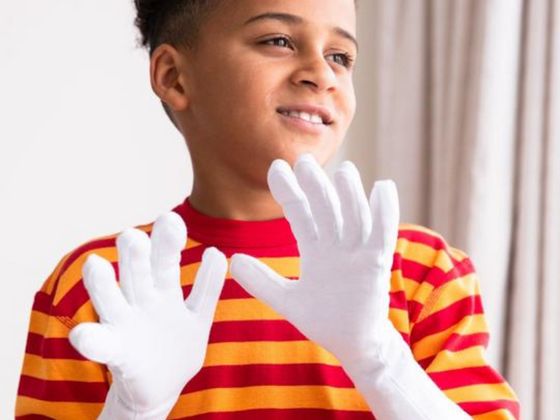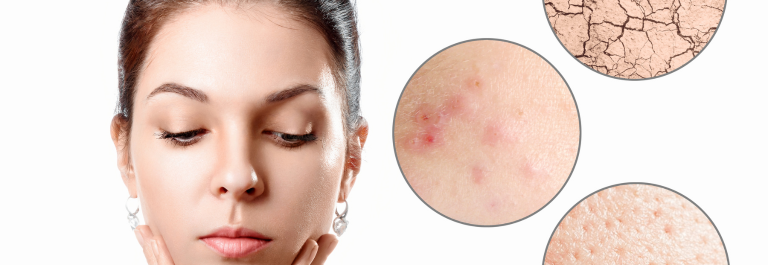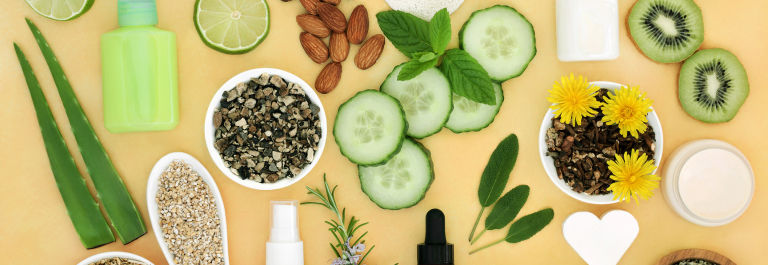Over the summer months, soaring temperatures can prove a nightmare for sensitive skin, increasing the risk of eczema flares and triggering itchy heat rash.
Although there are many overlaps between the causes, symptoms, and treatment methods of these two skin conditions, it is important to recognize the difference between eczema and heat rash distinctively and to find the right diagnosis.
That's why throughout this post, we'll explore everything you need to know about:
-
The causes of eczema and heat rash
-
The symptoms of eczema and heat rash
-
Top tips for differentiating these skin conditions
-
Natural prevention and best treatment methods for soothing heat eczema rash
Keep reading to untangle the truth about why your skin reacts to the heat this way and how best to prevent flare ups this summer.
What Is Eczema?
Eczema is a common long-term skin condition, impacting 10% of all Americans today. Most typically, it will develop during early childhood and requires ongoing treatment with eczema cream for babies.
Causes
While the exact cause of eczema will differ from person to person, it is thought to be spurred by a combination of genetic and environmental triggers.
For people with eczema, the skin's natural barrier against environmental irritants and allergens is weakened, triggering a characteristically itchy rash as the body's immune system attempts to overcompensate and defend the skin against infection.
You may notice that eczema typically coincides with asthma and other allergies. This is because these three conditions exist within an 'atopic triad' underpinned by dysfunctions in a person's immune system.
Symptoms
-
Dry, itchy, and inflamed skin, which may crack, peel, or flake
-
Eczema flare ups appear red on lighter skin and brown or grey on darker-toned skin
-
Severe eczema flares may lead to skin thickening and discoloration over time
-
Scaly patches can develop anywhere on the body but are most common in skin folds or points of friction such as between fingers, the insides of elbows and the backs of knees, on the eyelids, or the scalp
- Weepy skin
The most common type of eczema is atopic dermatitis, which impacts 26 million people across the United States.
Other variants include dyshidrotic eczema, which causes itchy blisters on the soles of a patient's feet and palms of their hands, or contact dermatitis, which is an allergic reaction to topical irritants or allergens such as chemicals, medications, or certain fabrics.
What is Heat Rash?
Unlike eczema, heat rash typically flares for short periods, coinciding with the humid climate, hot weather, or excessive sweating.
Causes
Otherwise known as prickly heat, heat rash occurs when sweat glands become clogged, pushing sweat down into the skin's deeper layers and trapping it there. This can be exasperated by wearing tight, sweaty clothes or wet diapers for long periods.
It is worth noting that the risk of heat rash is higher amongst infants and children more prone to overheating.
Unlike eczema, which tends to flare periodically and requires long-term management, heat rash tends to clear once the skin is cool again.
Symptoms
-
The mildest form of heat rash is known as miliaria crystallina. This is characterized by red bumps or fluid-filled blisters across the skin
-
Itchy skin and a prickling sensation
-
Mild swelling
-
In severe cases, heat rash can lead to deep, inflamed lumps
-
Outbreaks tend to occur in areas of the body prone to humidity, friction, and sweating, such as the armpits, under the breasts, the groin area, or any place where clothing rubs against the skin.
Why Does My Eczema Get Worse With The Heat?
It gets even harder to differentiate eczema and heat rash during the summer months, because the heat inflames both skin conditions.
To help you spot the difference, we're here to outline exactly why and how the climbing temperatures might impact your eczema prone skin.
Sweating
Unlike heat rash, which originates underneath the skin's surface, eczema sweating causes troubles at the skin's surface layer.
For example, sweat contains sodium (or salt), which may irritate sensitive skin (particularly if your eczema patches are already flaking).
Have you ever noticed your skin feeling tight once your sweat has dried too? Well, that's because your body loses water when you sweat, leaving the skin feeling less supple and more prone to cracking.
Sun Exposure
When it comes to heat rash, sun exposure increases the likelihood of this rash developing due to excessive sweating.
However, over-exposure to the sun's rays carries additional complications for eczema prone skin. For instance, the added heat may further dry out and inflame your skin. In excess, the UV rays from the sun may also decrease the body's production of collagen and elastin, which are essential for keeping the skin soft, strong, and resilient.
Unfortunately, while it is essential to wear sunscreen to help keep you safe from more serious diseases such as skin cancer, some creams may also spark an allergic reaction. Be sure to run a patch test before throwing your sunscreen bottle into your holiday suitcase.
Air Conditioning
Ironically, blasting the air con in an attempt to cool down fast can worsen atopic dermatitis symptoms.
This is because sudden changes in body temperature may trigger eczema flare ups, particularly when air conditioning dries out the skin quickly.
Allergens
And finally, unlike heat rash, for many people, eczema is connected to an issue with their immune system, which can be triggered during allergic reactions.
As the weather warms and plants and trees release pollen, you may experience eczema as part of your hay fever symptoms. In the summertime, there's also the increased risk of getting bitten by nasty bugs and other critters as you spend time outdoors, sparking contact dermatitis.
How Can I Treat Heat Rash Vs. Eczema
Breathable fabrics
Whether you're trying to tackle an outbreak of heat rash or eczema this summer, one of the most helpful things you can do for your skin is to find clothing that allows your skin to breathe.
Wearing loose-fitting clothes made from natural fibers is a great way to help keep your skin cool and dry, reducing sweating and helping you feel more comfortable and confident in the sunshine.
Cotton Garments
Many people love the natural feel of cotton on the skin. It's also a recommended material for eczema because it's cool and breathable and non-irritating. In fact, for those with the most sensitive of skin, sometimes 100% cotton is all they can wear. Well, we've got you covered. We have a wide selection of 100% cotton clothing from underwear to pants and much in between. Take a look at our 100% cotton collection.
Remedywear™
If you're looking beyond cotton, have you considered TENCEL? It's softer than cotton and smoother than silk and is the hottest new material in the dermatology world. Remedywear makes soft, cooling garments for kids and adults that are perfect for wearing during the day under regular clothing or as dry wrap clothing or wet wraps for extra skin soothing. Made from TENCEL and anti-bacterial zinc fibers, these clothes have also been proven to reduce the severity of atopic dermatitis, and itchiness and improve sleep quality.
Essential for the summer, Remedywear™ also provides sun safe 35-50+ UV protection.
To soothe eczema flares in key problem areas such as behind the knees or elbows, we recommend the Remedywear™ (TENCEL + Zinc) Sleeves/Bandages for Babies to Adults. For fuller-body protection from excessive sweating and overheating, we suggest the Remedywear™ (TENCEL + Zinc) Long Sleeve Shirt for Adults or Kids.
Julie May Underwear
To help reduce sweating in intimate areas, try the 100% Organic Cotton Underwire Bra with Silk and Lace or Pure Silk and Organic Cotton Lingerie by Julie May. These specially designed undergarments have been made with certified organic Pima Cotton and lined in pure silk for a luxuriously soft touch. If you suffer from skin allergies, latex allergies, dry skin, or sensitive skin, these are the undies for you!
Staying Hydrated & Cool
To prevent heat rash, the key is to stay cool, reducing the need for your body to produce sweat and allowing your inflammation to calm down.
Alongside wearing lightweight clothing, to help with this, you may wish to:
-
Take a regular cool shower or cool baths with gentle eczema soap
-
Avoid exercising in excessive heat or humid conditions
-
Change out of your sweaty clothes frequently and wash them with detergent for sensitive skin
If you have eczema, however, alongside trying to stay cool, you mustn't allow your skin to dry out at the same time.
To prevent eczema flares, lock in extra moisture after taking a lukewarm shower by applying a soothing, nourishing eczema cream to your skin's affected area:
-
Safe for eczema and heat rash alike, this Baby & Adult Soother contains just three Chinese herbs in a base of olive oil and beeswax to soothe dry skin conditions and calm itchy rashes.
-
This Hot Skin Soother has also been specially formulated to combat heat rash and related skin inflammations, relieving itching in skin folds, armpits, groin area, and elbow and knee creases.
-
This Organic Manuka Skin Soothing Cream is a creamy, non-greasy balm that's excellent for soothing irritated skin and flare ups. Made with New Zealand Manuka honey combined with organic tree nut-free oils and beeswax, this cream is safe for even the most sensitive skin. For those seeking alternative natural options, beef tallow cream is another excellent choice, including for babies.
To avoid triggering contact dermatitis, we recommend doing a patch test with any moisturizer your skin is unfamiliar with. If any of your symptoms persist or become a chronic condition, we urge you to consult a healthcare professional for advice.
Soothe your Eczema and Heat Rash Today
Follow these tips to help you get the bottom of your itchy skin infection this summer and to keep you and your family safe in the heat.
